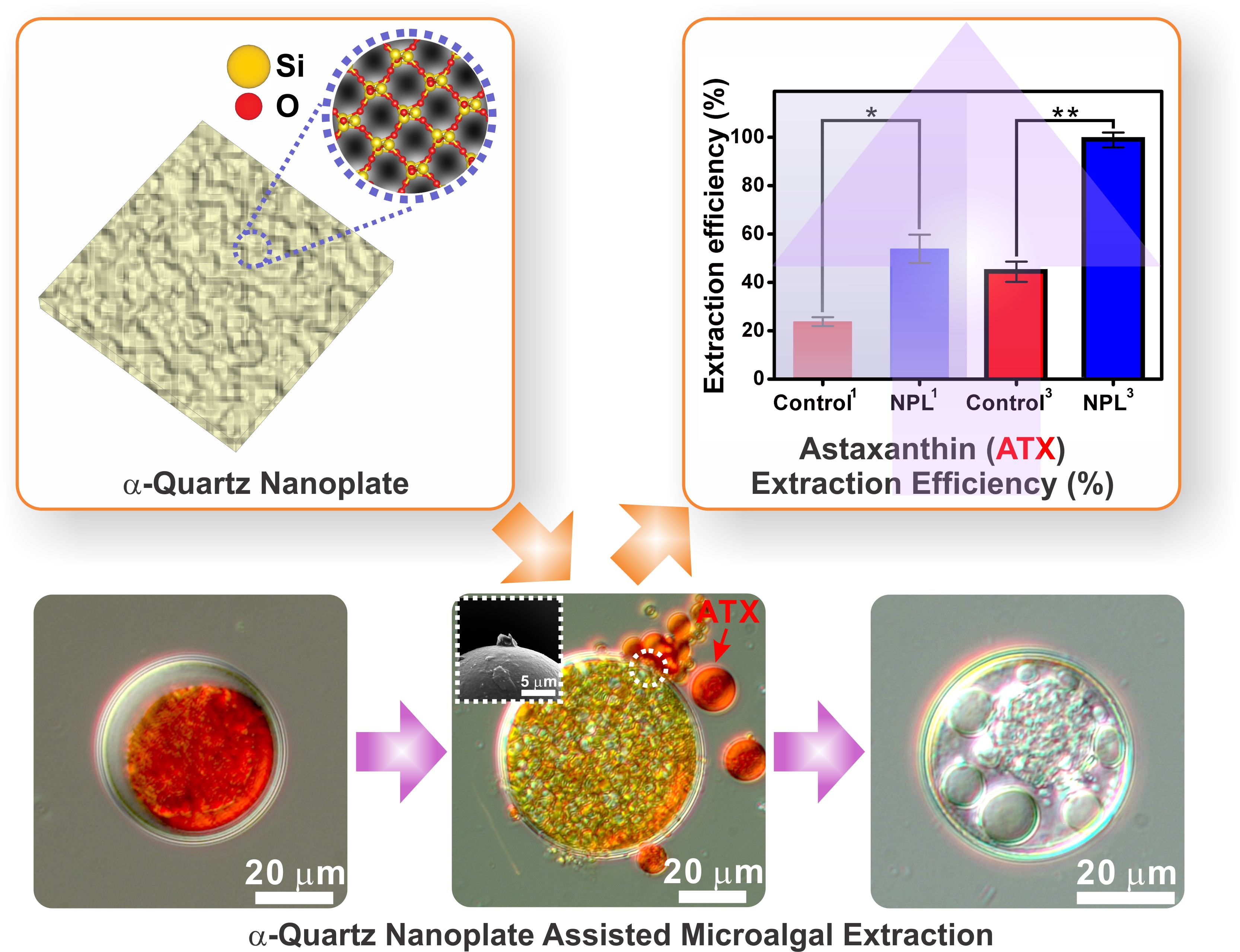2023 AIChE Annual Meeting
(421a) A Template-Free Solution-Phase Synthesis of Novel Two-Dimensional a-Quartz Nanoplates and Their Applications in Energy-Saving, High-Efficient Microalgal Biorefinery
Authors
Herein, we present a facile hydrothermal synthetic route for preparing novel α-quartz nanoplates (NPLs) from amorphous silica nanoparticles. As-synthesized NPLs were characterized employing XRD, AFM, SEM, TEM, and electron diffraction measurements exhibiting a highly crystalline phase of α-quart with an average lateral size and thickness of 1.14 ± 0.32 mm and 7.7 ± 0.6 nm, respectively. XPS, FT-IR, TGA/DTA, Raman, and 29Si solid state NMR spectroscopy confirmed their unique physicochemical properties based on their characteristic anisotropic nanostructures. Efficient extraction of highly valuable chemicals, for example, astaxanthin (ATX), by α-quartz NPL from microalgae cell Haematococcus pluvialis (H. pluvialis) was successfully demonstrated through laceration of the cell wall by α-quartz NPL, as a nanoscale scalpel, under facile ultrasonic conditions. ATX extraction efficiency of ~99% with < 5 min rapid ultrasonication, as well as minimal cellular damage, could be achieved via α-quartz NPLs assisted harvest processes. Understanding the potential mechanism of their formation, ânanorazorâ effect, and extraction of ATX from H. pluvialis represents a meaningful step toward the goal of delivering highly efficient microalgae harvesting biorefinery processes.

